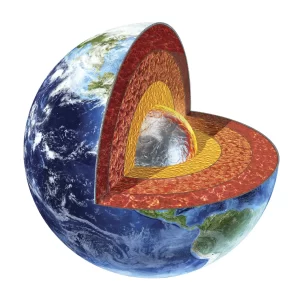New research adds evidence to the controversial idea that the hot, solid ball at the center of our planet has been reducing its speed for years as part of an oscillating cycle
The Earth’s inner core, a solid ball of iron and nickel about 70 percent of the size of the moon, rotates along with the rest of the planet, but scientists disagree about whether it might spin at a slightly slower, faster or equal speed, compared to the outer layers. The study, published in June in the journal Nature, uses seismic waves to add evidence for the idea that the inner core switches between spinning faster and slower than Earth’s crust
When I first saw the seismograms that hinted at this change, I was stumped,” study co-author John Vidale, an earth scientist at the University of Southern California, says in a statement. “But when we found two dozen more observations signaling the same pattern, the result was inescapable. The inner core had slowed down for the first time in many decades
Still, not everyone is convinced. Wen tells Science News that even with the new study, “nothing has changed”—he maintains that the expanding and contracting of the inner core’s surface is significant enough to explain the patterns observed in the waveforms
